Last updated on July 22nd, 2022 at 05:11 pm
In many ways, the First World War was a more horrific experience for those who fought in it than the much bloodier Second World War.
While the savagery of the Eastern Front between 1941 and 1944 was immense, at least the soldiers there were constantly on the move in a rapidly shifting conflict.
The same cannot be said for life in the trenches during the first global conflict years earlier, a clash of armies in which claustrophobia and psychological terror were the daily lots of the average soldier.
British, French, German, Italian, and other European men in their teens, twenties, and thirties spent much of the time from 1914 to 1918 living in a hole in the ground, constantly listening to machine-gun rounds and artillery explosions.
When a reprieve came from this, your commanding officer often instructed you to climb out of the hole you were in and run in the direction the machine-gun fire was emanating. It was a difficult existence.
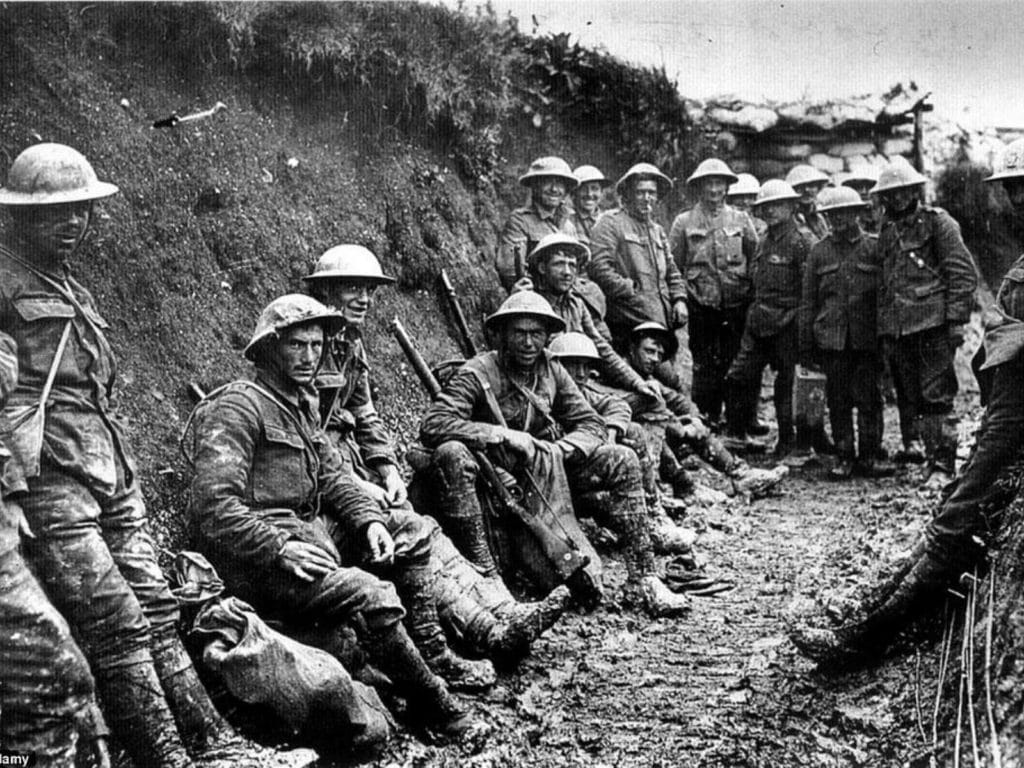
The Fronts of WWI
Of course, the experience of fighting in the trenches of the First World War varied where an individual was stationed. The most significant amount of manpower was pumped into north-eastern France, the site of the infamous Western Front.
Here German, French, British, and, from 1917 onwards, American troops spent four years fighting for just over one hundred kilometers of land. The territory had been reduced to a desolate landscape of churned-up mud and craters created from artillery explosions within a few months of the war commencing.
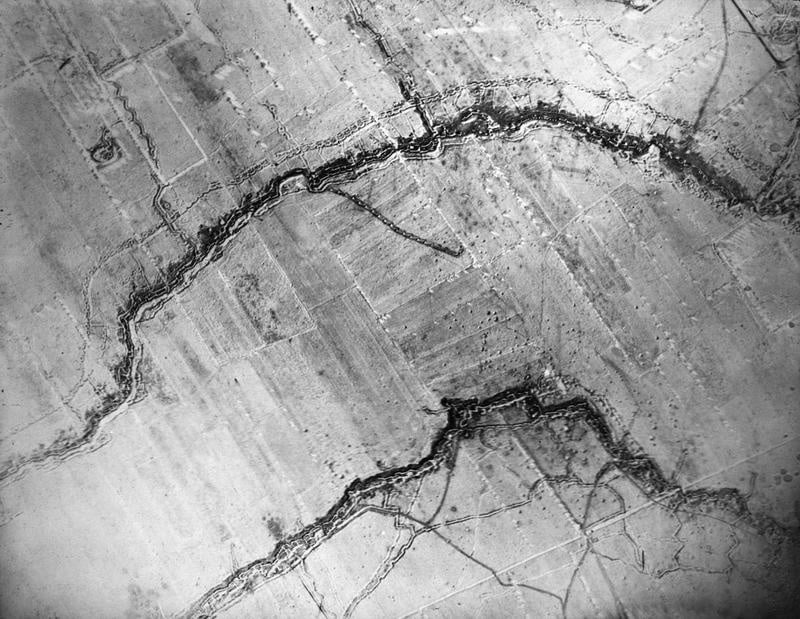
Trenches were also used in the Balkans and on the Eastern Front. However, the campaigns here still largely resembled an eighteenth or nineteenth-century field campaign, with armies often moving forward and back hundreds of kilometers as offensives were launched.
Finally, on the Southern Front, an often overlooked theatre of the war, one might have had to contend with the cold Alpine weather and live in a trench on a mountainside as the Italians and Austrians battled it out along their mutual border from 1915 onwards.
Why Were Trenches Necessary?
Most British, German, British, and French soldiers were inevitably sent to the Western Front in France when called up. The trenches here have become synonymous with the First World War in general.
Because of the destructive capability of machine guns, artillery and chemical weapons such as mustard gas, the Germans, French and British quickly realized in 1914 that their armies would be slaughtered if they tried to advance on open ground.
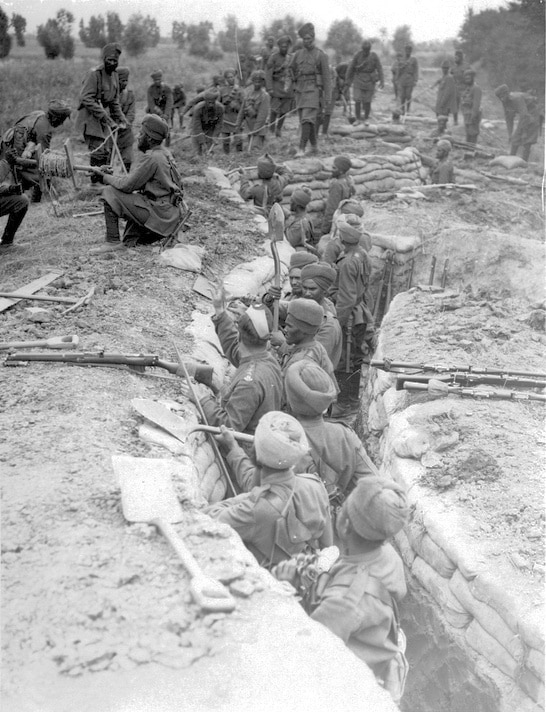
Consequently, within weeks of hostilities, both sides were digging miles of trenches across north-eastern France where their soldiers could hide between assaults on the enemy lines. Thus, for dozens of kilometers across the Western Front, men lived in these holes in the ground for extended periods.
Life in the Trenches
Life in the trenches was not pleasant. The average one was about eight or nine-foot deep, with sandbags placed on the ground above it to provide additional protection.
They were roughly six feet wide. Within this confined space, soldiers were expected to eat their meals, maintain their equipment, sleep, go to the toilet, shave their face, brush their teeth, write letters home and play cards or anything else which passed the time until the next movement forward or backward along the front.
Effectively, they tried to live as best they could in a muddy, confined space. Sometimes this was lived in fear of the next onslaught, particularly if one was stationed in a region like the trenches along the River Somme during the infamous First and Second Battles of the Somme.

If one was stationed in a place where the war was effectively in a period of stalemate, boredom, punctuated by artillery explosions, was the major enemy.
One also had to adjust to sleeping during the day, as this was usually a period of inaction. Major activities such as an assault on the enemy lines or repair of trenches and gun positions were usually carried out at night time when visibility was much reduced, and it was less dangerous to leave the trenches.
Dining in a French Trench
The food offered to the average soldier in the trenches of the First World War was not pleasant. For instance, rations consisted mainly of bread and hard, dry biscuits augmented with cans of preserved meat.
It became less pleasant as time went on. By 1916, as food production slumped all across the continent, flour was in short supply, and all sides began producing bread using substitutes such as ground dried turnip. The resulting product was unpleasant.
Nevertheless, the carbohydrate-heavy food supply which was provided to the average soldier in the trenches ensured that most soldiers during the war were consuming well over 3,000 calories per day.
There was also no shortage of booze. Beer and wine were relatively plentiful, while soldiers of all hues had their supply of these augmented by different types of spirits from time to time.
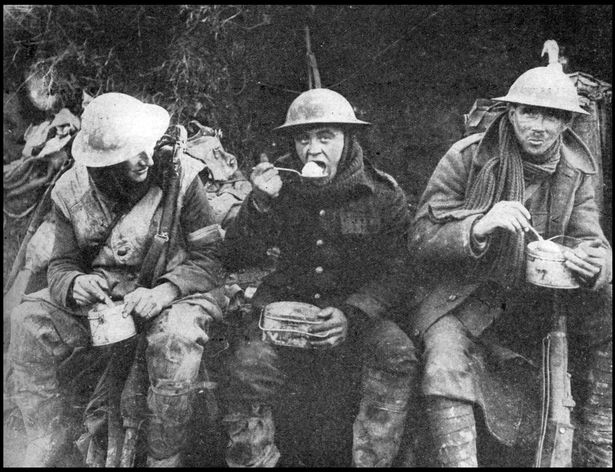
The French were given brandy, the British whiskey, while the Germans often had schnapps. Moreover, no matter where one went in the trenches, people were smoking at a time when two-thirds of adult males still did so.
All in all, the diet of soldiers on the Western Front was better than in most conflicts, resulting from the supply lines having been established in the autumn of 1914 and remaining relatively stationary for the four years that followed.
Dirt and Disease
Beyond gunfire, artillery, and mustard gas, one had to worry about dirt and disease in the trenches. Mud or bacteria were more likely to kill you during the First World War than an enemy bullet.
Rats were everywhere in the trenches, and so were lice and fleas. In an age before the discovery of penicillin, a simple cut from a knife or rifle bayonet could lead to a fatal infection.
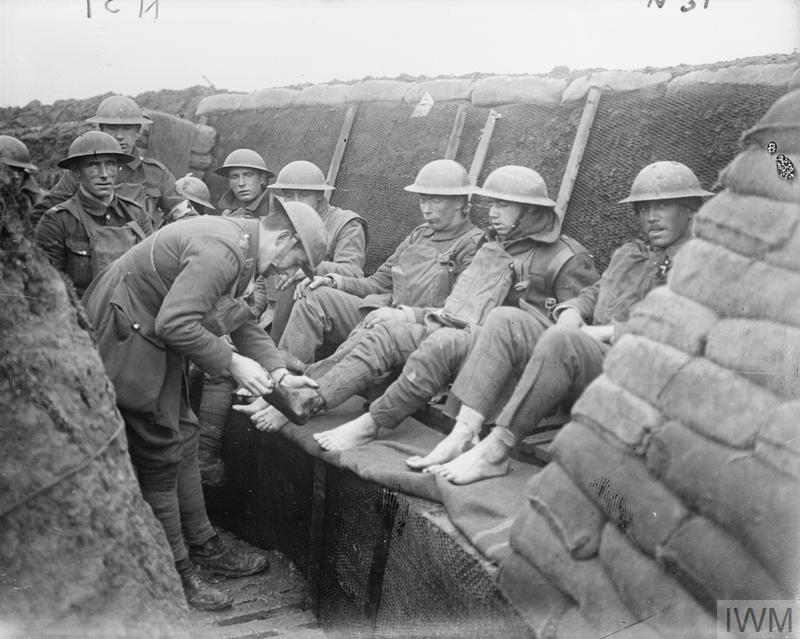
Moreover, in the cramped environment of the trenches, diseases such as influenza and typhus spread like wildfire. In addition, new diseases increased during the war, such as ‘trench fever, a malaria-like disease.
A hazardous condition was ‘trench foot .’This was caused by boots and socks being constantly wet during the autumn and winter. If left untreated, it often leads to nerve damage or even amputation of one’s foot or leg.
Reserve Lines and Rest
While living in the trenches was unpleasant, it was not perpetual. Soldiers generally spent about two weeks at a time stationed in the trenches on the front lines.
They were then rotated out to serve either in the reserve lines behind the front line trenches or at the reserve bases, the latter of which were miles away from the front and were more like traditional army camps with tents and temporary buildings.
Movement between these different lines during rotation was arduous, as the average soldier on the Western Front carried a large amount of equipment with him.
If one had been serving for a sustained period, they might be granted leave, whether to visit Paris or, in the case of the British, possibly a short journey home to England, Wales, Scotland, or Ireland.
In many instances, families were confronted by sons, brothers, and husbands suffering from various psychological issues due to their time in the trenches.
At the time, it came to be known as shell-shock, but we would term it Post Traumatic Stress Disorder today, a condition that increased across Europe in the aftermath of the First World War due to life in the trenches.

